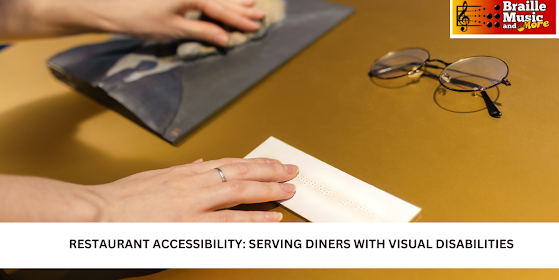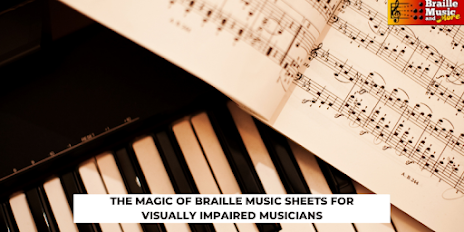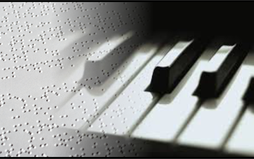How Braille Music Opens Doors for Blind Musicians
Music is often called the universal language, but for blind and visually impaired musicians, learning it requires a different pathway. Traditional sheet music depends on sight, leaving many without access to written scores. This is where Braille music steps in. By making musical notation accessible, Braille music empowers blind musicians to study, perform, and compose with the same depth and independence as sighted artists.
What Is Braille Music?
Braille music is a system of musical notation designed for people who are blind or visually impaired. It uses combinations of raised dots to represent notes, rhythms, dynamics, and expressions. Unlike standard Braille for reading text, Braille music is unique because it condenses complex musical symbols into a tactile format. With training, musicians can interpret full compositions by touch, whether classical, jazz, or modern.
The Power of Accessibility in Music
Access to Braille music creates opportunities that extend beyond personal enjoyment. Blind musicians can pursue formal music education, audition for choirs, and join orchestras. They can also compose and share their work without relying entirely on audio recordings. This independence allows creativity to flourish. For many, it builds confidence and helps them compete equally with sighted peers in the music industry.
Braille music also provides precision. While listening to recordings helps musicians learn by ear, Braille notation ensures they capture every detail of a composition. This includes subtle tempo markings, articulation, and dynamic changes that might otherwise be missed. The result is a richer and more professional level of performance.
How Braille Music Opens Career Doors
The availability of Braille music has changed the careers of countless blind musicians. It allows them to pursue advanced training at music schools and conservatories. Many professional pianists, violinists, and vocalists who are blind rely on Braille music for rehearsals and performances. Without it, preparing for concerts or learning new repertoire would be far more difficult.
Braille music also supports collaboration. Musicians can join ensembles, choirs, and orchestras with confidence, knowing they have the same access to scores as their colleagues. In turn, this fosters inclusivity in the arts. The presence of blind musicians on global stages proves that talent and dedication—not vision—determine success.
Technology and Braille Music Today
Technology continues to enhance the reach of Braille music. Digital tools and embossers make it easier to produce scores, while refreshable Braille displays allow instant access to notation. Online platforms now provide Braille sheet music for everything from classical symphonies to contemporary songs. These advances ensure that blind musicians stay connected to global music culture.
Final Thoughts
Braille music is more than notation. It is a key that opens doors to creativity, education, and professional opportunities for blind musicians. By making music truly inclusive, it ensures that every artist has the chance to share their gift with the world.
At Braille Music and More, we are dedicated to providing high-quality Braille music resources that support learners and professionals alike. Whether you are a student beginning your journey or an experienced performer seeking advanced scores, we are here to help. Visit Braille Music and More today and discover how Braille music can unlock your potential.


Comments
Post a Comment